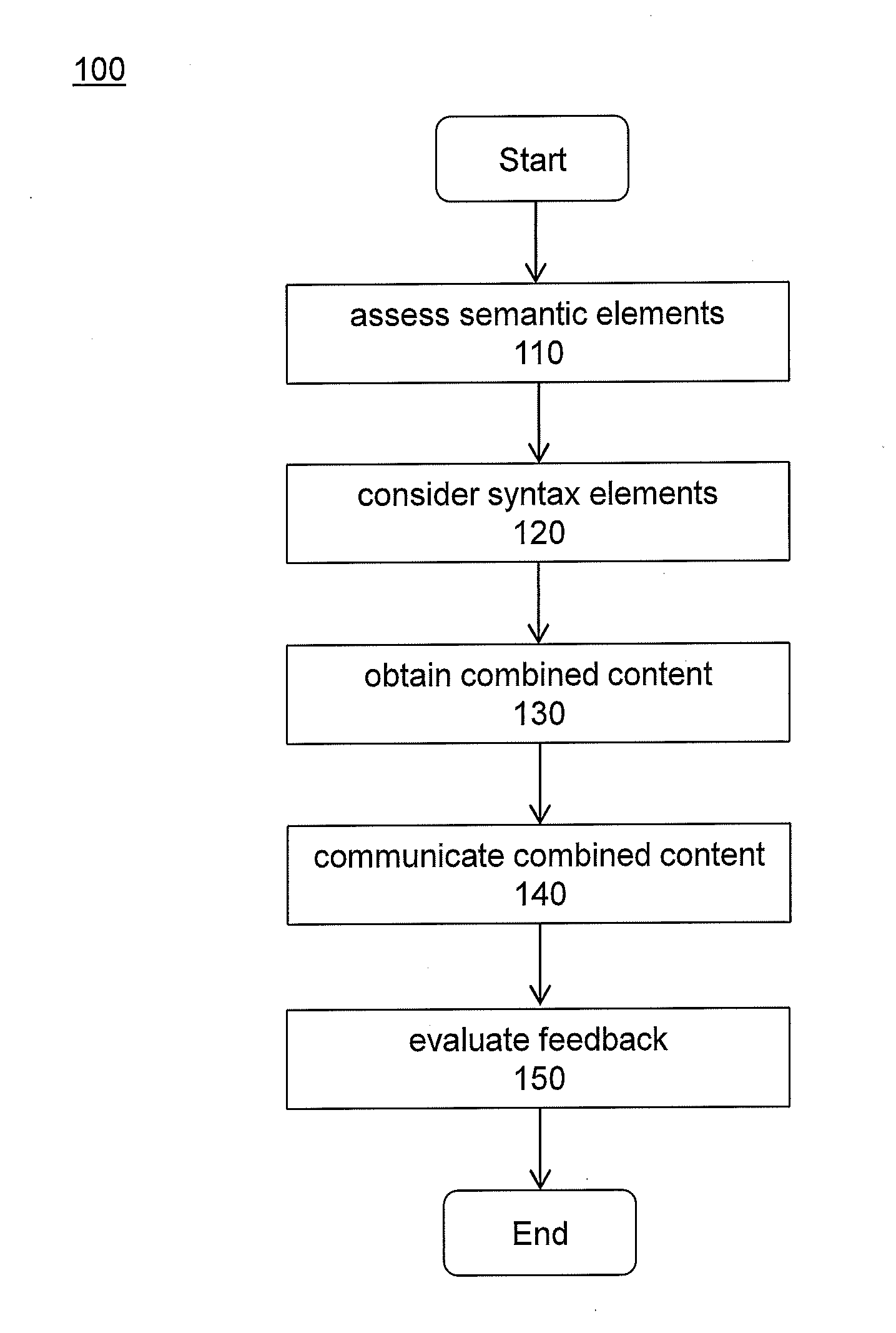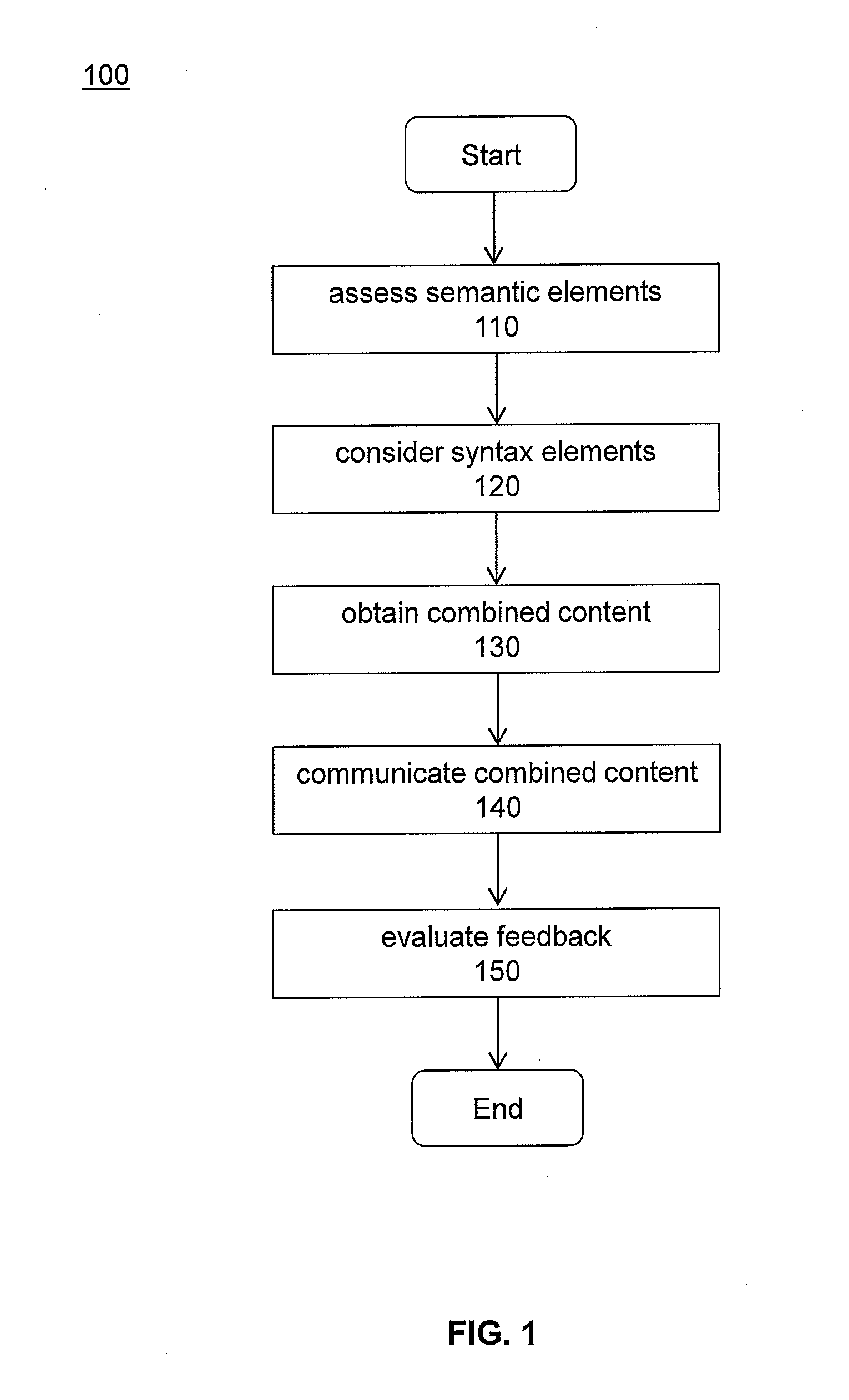Computer system methods for generating combined language content
a technology of language content and computer system, applied in the field of linguistics, can solve the problems of destroying the flow of the reading process, unable to consistently work well, and discouraged readers, and achieve the effect of maximizing the learnability of the foreign language for each user and the likelihood of learning the foreign languag
- Summary
- Abstract
- Description
- Claims
- Application Information
AI Technical Summary
Benefits of technology
Problems solved by technology
Method used
Image
Examples
Embodiment Construction
[0023]The invention generates natural language narrative or combined content by blending a user's native tongue and a language to be learned based on elements of code-switching. This facilitates natural language learning in context. The combined content may be static content or dynamic content that changes, for example real-time, based on a user's preference and / or current language proficiency.
[0024]FIG. 1 illustrates a flowchart of computer system method steps for generating content including words from at least two different languages. Content including words from at least two different languages is generated by first receiving input of a language a user is fluent—referred to as fluent language—and a language the user wishes to learn, or the language the user is not fluent—referred to as not fluent language. Text from each of the languages—fluent and not fluent—is aligned by assessing one or more semantic elements of the text (step 110). It is noted that the invention is discussed...
PUM
 Login to View More
Login to View More Abstract
Description
Claims
Application Information
 Login to View More
Login to View More - Generate Ideas
- Intellectual Property
- Life Sciences
- Materials
- Tech Scout
- Unparalleled Data Quality
- Higher Quality Content
- 60% Fewer Hallucinations
Browse by: Latest US Patents, China's latest patents, Technical Efficacy Thesaurus, Application Domain, Technology Topic, Popular Technical Reports.
© 2025 PatSnap. All rights reserved.Legal|Privacy policy|Modern Slavery Act Transparency Statement|Sitemap|About US| Contact US: help@patsnap.com



